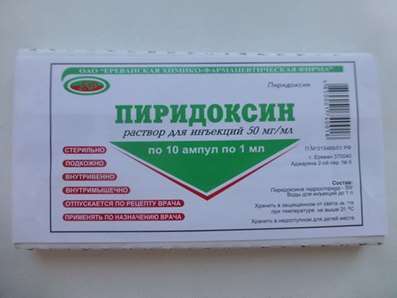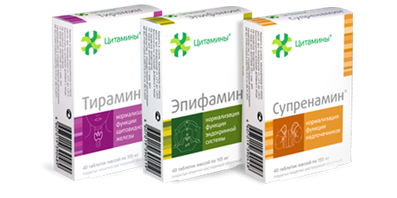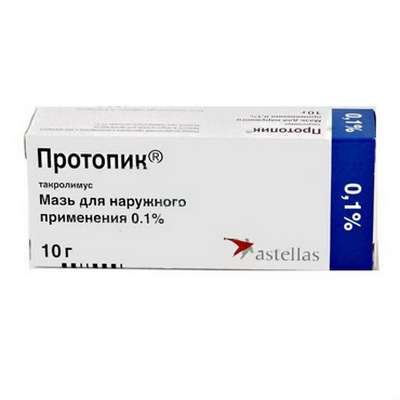Instruction for use: Detrusitol
I want this, give me price
Active substance: Tolterodine
ATX Code
G04BD07 Tolterodine
Pharmacological group
M Cholinolytics
The nosological classification (ICD-10)
N39.3 Involuntary urination
Urinary incontinence in women, Anishuriya, Urinary incontinence
N39.4 Other specified types of urinary incontinence
Urinary incontinence, Bed-wetting, Frequent nocturnal urination, Urinary incontinence in women, Anishuriya, Primary nocturnal enuresis, Primary nocturnal enuresis in children
N31.1 Reflex neuropathic bladder, not elsewhere classified
hyperreflexia, Overactive Bladder, detrusor hyperreflexia, detrusor hyperreflexia
N31.2 neurogenic bladder weakness, not elsewhere classified
Urinary incontinence in a stressful situation, Atony of bladder, Atony of the bladder (the sphincter) (neurogenic), Impaired function of the sphincter of the bladder, Neurogenic bladder disorders, Neurogenic bladder disorder, Neurogenic bladder, Functional insufficiency of the sphincter of the bladder, Imperative incontinence
R32 Urinary incontinence unspecified
daytime enuresis, Idiopathic bladder instability, Urinary incontinence, nocturia, The disorder of the bladder sphincter function, Spontaneous urination, Mixed forms of urinary incontinence, Functional disorders of micturition, Functional micturition disorders, Functional enuresis in children, Enuresis
Structure and Composition
Capsules of prolonged action 1 caps.
active substance:
Tolterodine hydrotartrate 2 mg /4 mg
(Equivalent to 1.37 mg or 2.74 mg tolterodine, respectively)
Auxiliary substances: sugar granules (sucrose - 40.33 mg-59.05 mg / 80.66 mg-118.1 mg, corn starch - 5.49 mg-24.21 mg / 10.92 mg-48.42 mg ) - 45.82 mg-83.26 mg / 91.58 mg-166.52 mg; Surelease E-7-19010 Transparent (ethylcellulose 3.52 mg / 7.03 mg, medium chain triglycerides 0.75 mg / 1.5 mg, oleic acid 0.41 mg / 0.82 mg); Hypromellose - 3.84 mg / 7.68 mg
Capsules of hard gelatin: indigocarmine, titanium dioxide, gelatin, iron dye oxide yellow (capsules only 2 mg); Inks White Opacode White S-1-7085 (shellac, titanium dioxide, propylene glycol, simethicone)
Description of dosage form
Capsules, 2 mg: hard, gelatinous, with a blue-green body and lid, white ink on the body - number 2, on the lid - a symbol in the form of a man. The size is 4.
Capsules, 4 mg: hard, gelatinous, with a body and a lid of blue color, white ink on the body - figure 4, on the lid - a symbol in the form of a little man. The size of the number 3.
Contents of the capsules: microspheres of white with a yellowish hue of color about 1 mm in diameter.
pharmachologic effect
Pharmacological action - m-anticholinergic.
Pharmacodynamics
Tolterodin is a competitive antagonist of cholinergic muscarinic receptors with the greatest selectivity for bladder receptors.
The 5-hydroxymethyl derivative of tolterodine is also highly specific for muscarinic receptors and does not significantly affect other receptors. Tolterodin reduces detrusor contractile activity, and also reduces salivation. In doses exceeding therapeutic, causes incomplete emptying of the bladder and increases the amount of residual urine.
The therapeutic effect of tolterodine is achieved in 4 weeks.
Pharmacokinetics
Pharmacokinetic characteristics
Cmax tolterodine in the serum after taking the drug is achieved in 2-6 hours. T1 / 2 is about 6 hours, and in patients with isozyme deficiency CYP2D6 - about 10 hours. Css of the drug is achieved within 4 days. Food does not affect the bioavailability of the drug, although the concentration of tolterodine increases when the drug is taken with food. In the range of therapeutic doses, there is a linear relationship between the peak concentration in serum and the dose of tolterodine.
Suction. Absolute bioavailability of tolterodine in the majority of patients is 17%, and in persons with a deficiency of the isoenzyme CYP2D6, 65%.
Distribution. Tolterodin and 5-hydroxymethyl metabolite mainly bind to the alpha-1-acid glycoprotein. Unrelated fractions are 3.7 and 36%, respectively. Vd tolterodine is 113 liters.
Metabolism. After oral administration, tolterodine is metabolized primarily in the liver by the polymorphic isoenzyme CYP2D6 to form a pharmacologically active 5-hydroxymethyl metabolite, which in turn is metabolized to 5-carboxylic acid and N-dealkylated 5-carboxylic acid. 5-hydroxymethyl metabolite has pharmacological properties close to the tolterodine and in the majority of patients it significantly enhances the effect of the drug. In persons with a deficiency of the isoenzyme CYP2D6 (approximately 7% of the population), tolterodine is dealkylated with CYP3A4 isoenzymes, resulting in the formation of N-dealkylated tolterodine, which is not pharmacologically active. The systemic clearance of tolterodine in most patients is about 30 l / h. The decrease in the clearance of the initial compound in individuals with a deficiency of the isoenzyme CYP2D6 leads to an increase in the concentration of tolterodine (approximately 7-fold) in the blood serum against the background of the undetectable concentrations of the 5-hydroxymethyl metabolite. The pharmacological activity of the 5-hydroxymethyl metabolite is equivalent to that of tolterodine. Due to the difference in binding to the proteins of tolterodine and the 5-hydroxymethyl metabolite, the unconjugated tolterodine AUC in individuals with CYP2D6 isoenzyme deficiency is close to the sum of the AUC of the unbound vollerodine and the 5-hydroxymethyl metabolite in most patients with the same dosing regimen. Safety, tolerability and clinical effect of the drug do not depend on the activity of the isoenzyme CYP2D6.
Tolterodin does not inhibit the isoenzymes CYP2D6, 2C19, 2C9, 3A4 or 1A2.
Excretion. Approximately 77% of tolterodine is excreted by the kidneys and 17% by the intestine. Less than 1% of the dose is excreted unchanged and about 14% - in the form of a 5-hydroxymethyl metabolite. 5-carboxylic acid and N-dealkylated 5-carboxylic acid are excreted by the kidneys (51 and 29%, respectively).
Pharmacokinetics in selected patient groups
Violation of the function of the liver. In patients with cirrhosis of the liver, there are twice as large concentrations of unbound Tolterodine and 5-hydroxymethyl metabolite.
Impaired renal function. The average concentration of unbound vollerodine and 5-hydroxymethyl metabolite is 2 times higher in patients with severe renal dysfunction (Cl creatinine ≤30 ml / min) than in healthy volunteers. The blood plasma content of other metabolites in these patients is much higher (12 times) than in healthy volunteers. The clinical significance of increasing the concentration of these metabolites is unknown.
Indications
Hyperactivity of the bladder, manifested by frequent imperative urge to urinate, increased urination, urinary incontinence.
Contraindications
Retention of urine;
Non-treatable angle-closure glaucoma;
Established hypersensitivity to tolterodine or other components of the drug;
Miastenia gravis;
Severe ulcerative colitis;
Megacolon;
Slowing the emptying of the stomach;
Rare hereditary impairments of fructose tolerance, glucose-galactose malabsorption or a deficiency of sucrose-isomaltase;
Organic causes of frequent and mandatory urge to urinate;
childhood.
With caution: the risk of urinary retention (pronounced obstruction of the lower parts of the urinary tract); Risk of slowing down the emptying of the stomach, incl. Obstructive diseases of the digestive tract, such as stenosis of the pylorus; Hepatic or renal insufficiency (daily dose of the drug should not exceed 2 mg); Neuropathy; Hernia of the esophageal opening of the diaphragm.
The studies revealed that the effect on the QT interval was more pronounced at a dose exceeding 8 mg / day (which is 2 times higher than the therapeutic dose of 4 mg), as well as in patients with decreased activity of the isoenzyme CYP2D6. With the simultaneous use of moxifloxacin and tolterodine at a dose of 8 mg / day, the effect of the latter on the QT interval was not so pronounced as compared with 4-day therapy with tolterodine, however, the reliability of the data is not proved. In this regard, special care should be taken when prescribing the drug to patients with a documented congenital or acquired extended QT interval; Electrolyte disorders, such as hypokalemia, hypomagnesemia and hypocalcemia; Bradycardia; Presence of heart diseases (eg cardiomyopathy, myocardial ischemia, arrhythmia, congestive heart failure); Taking antiarrhythmic drugs of class IA (for example, quinidine, procainamide) or class III (amiodarone, sotalol).
When simultaneous application of inhibitors of the isoenzyme CYP3A4, such as antibiotics of the macrolide group (erythromycin, clarithromycin), or antifungal agents of the azole group (ketoconazole, itraconazole, miconazole), the total daily dose of tolterodine should be reduced to 2 mg.
pregnancy and lactation
Adequate and controlled studies of safety of use in pregnancy have not been conducted, so the use of the drug in pregnancy is possible only if the intended benefit of therapy for the mother exceeds the potential risk to the fetus. Since data on the isolation of tolterodine with breast milk of lactating women are not available, the use of the drug in breastfeeding should be avoided.
Side effects
Tolterodin can cause mild or moderate antimuscarinic effects, such as dry mouth, dyspepsia, and reduced tear fluid secretion.
From the immune system: allergic reactions.
Infectious diseases: sinusitis.
Mental disorders: confusion.
From the nervous system: dizziness, headache, drowsiness, anxiety.
From the side of the organ of vision: visual impairment (including disruption of accommodation), xerophthalmia (dry sclera).
From the side of the vessels: the flow of blood to the skin of the face.
From the digestive system: abdominal pain, constipation, dyspepsia, flatulence, gastroesophageal reflux.
From the urinary system: dysuria, urinary retention.
General: fatigue, fatigue.
Side effects revealed in post-marketing observations
From the immune system: anaphylactic reactions.
Mental status: disorientation, hallucinations.
From the nervous system: memory impairment.
From the CCC: tachycardia, a feeling of a strong palpitation.
From the digestive system: diarrhea.
From the skin: angioedema.
General: peripheral edema.
Individual cases of exacerbation of dementia symptoms (confusion, disorientation, hallucinations) were reported in patients receiving combined therapy with tolterodine and cholinesterase inhibitors.
Interaction
Possible pharmacokinetic interaction with drugs metabolized by cytochrome P450 isoenzymes (CYP2D6 or CYP3A4) or inhibitors or inducers of these isoenzymes.
Drugs that have anticholinergic properties, enhance the action of tolterodine and increase the risk of side effects.
Agonists muscarinic cholinergic receptors reduce the effectiveness of tolterodine.
Tolterodin weakens the effect of prokinetics (such as metoclopramide and cisapride).
In patients with CYP2D6 isoenzyme deficiency, the simultaneous administration of potent CYP3A4 inhibitors such as macrolide antibiotics (erythromycin and clarithromycin), antifungal agents (itraconazole, ketoconazole and miconazole) should be avoided, due to an increase in serum albumin concentration and the risk of overdose.
Co-administration with fluoxetine (a potent inhibitor of the CYP2D6 isoenzyme, which is metabolized to norfluoxetine, an inhibitor of CYP3A4) results in a slight increase in the total AUC of tolterodine and its active 5-hydroxymethyl metabolite, which is not accompanied by clinically relevant reactions.
Tolterodin does not interact with warfarin, as well as combined oral contraceptives (ethinyl estradiol / levonorgestrel).
Dosing and Administration
Inside, regardless of food intake, swallowing whole. The recommended daily dose is 4 mg. Dosage regimen - 1 time per day.
The dose of the drug can be reduced to 2 mg / day, based on the individual tolerability of the drug.
For patients with impaired liver and kidney function, and also receiving ketoconazole or other potent inhibitors of CYP3A4 as a concomitant therapy, a daily dose of 2 mg is recommended.
Overdose
Symptoms: the most severe - a violation of accommodation and difficulty urinating, also possible hallucinations, severe arousal, convulsions, respiratory failure, tachycardia, urinary retention, dilated pupils.
Treatment: gastric lavage and the appointment of activated charcoal. With the development of hallucinations, strong excitation should be prescribed physostigmine; With convulsions or severe excitation - anxiolytics of the benzodiazepine structure; With developed respiratory failure - IVL; With tachycardia - beta-blockers; Urinary retention - bladder catheterization; With mydriasis - pilocarpine in the eye drops and / or transferring the patient to a dark room.
In case of an overdose, the necessary measures should be taken in connection with the prolongation of the QT interval.
special instructions
Before the beginning of treatment it is necessary to exclude organic causes of frequent and imperative urge to urinate.
Women of reproductive age should be treated only if reliable means of contraception are used.
Patients with rare hereditary impairments of fructose tolerance, glucose-galactose malabsorption or a deficiency of isomaltase sucrose should not take this medication.
Influence on the ability to drive a car or perform work that requires an increased speed of physical and mental reactions. During the period of treatment it is necessary to refrain from driving motor vehicles and practicing potentially dangerous activities that require an increased concentration of attention and speed of psychomotor reactions. Tolterodin can cause disruption to accommodation and slow the reaction rate.
Form of issue
Capsules of prolonged action, 2 mg, 4 mg. For 7 caps. In a blister (contour acrylic packaging) made of PVC / PVDC / aluminum foil. 1, 4, 7, 12 or 40 blisters are placed in a cardboard box.
Storage conditions
In the dark place at a temperature of no higher than 25 ° C.
Keep out of the reach of children.
Shelf life
2 years.
Do not use after the expiry date printed on the package.
Available On prescription.

 Cart
Cart





